Support For Hops Vines: Learn About Hops Plant Support
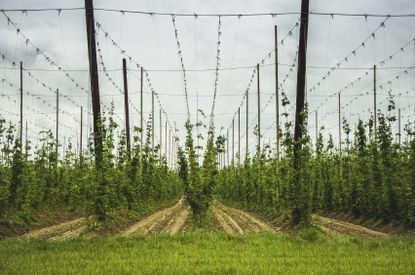

If you are a beer aficionado, you may have done some research on brewing a batch of your own delicious elixir. If so, then you already know that the necessary ingredient in beer – hops, which can grow up to 12 inches (31 cm.) a day, up to 30 feet (9 m.) in one year and can weigh between 20 to 25 pounds (9-11 kg.). Thus, these rampant climbers need a sturdy trellis of appropriate height to accommodate their size. The following article contains information on the best support for hops plants and building a trellis for hops.
Hops Plant Support
Most hops are grown for use in making beer, but the cones can also be used in soap, condiments, and snacks. With their reputed mild sedative effect, hop cones are also used in making soothing teas and pillows while the post-harvest bines are often twisted into holiday wreaths or used to make cloth or paper. This multiuse crop needs some careful consideration and planning, as the plants can live for up to 25 years, a long-term garden addition that needs some serious hops plant support. When thinking about building a trellis or support for hops vines, you need to consider not only a structure that can accommodate its prodigious growth but also how to facilitate easy harvesting. The hop bines (vines) will spiral around nearly anything that the strongly hooked hairs can clamber. During the first year of growth, the plant concentrates on gaining root depth, which will allow it to survive subsequent potential droughts. Thus, the vine size will likely only reach around 8 to 10 feet (2-3 m.), but given a healthy start, in later years the plants may reach up to 30 feet (9 m.), so it is advisable to build an appropriately sized support for hops vines at the get-go.
Trellis Ideas for Hops
Hop bines tend to grow vertically to the height of their support or trellis and then begin to grow laterally, which is where the plant will flower and produce. Commercial hops are supported by an 18 foot (5.5 m.) tall trellis with stabilizing horizontal cables. The hops plants are spaced 3 to 7 feet (1-2 m.) apart to allow the lateral branches to absorb sunlight and yet not shade the abutting bines. 18 feet (5.5 m.) might be a bit size prohibitive for some home gardeners, but there really is no best support for hops plants, they just need something upon which to scale up along with support for their lateral growth. There are a couple of hops support options that can utilize things that you may already have in your yard.
- Flagpole support – A flagpole trellis design incorporates an existing flagpole. Flagpoles are usually between 15 and 25 feet (5-8 m.) in height and often have a built-in pulley system, handy to raise the line in the spring and lower in the fall during harvest and eliminates the need for a ladder. The lines are set out like a tepee with three or more lines running from the central flag pole. The upside to this design is the ease of harvest. The downside is that the bines may crowd each other at the top of the pole, lessening the amount of sun they can absorb and resulting in a diminished yield.
- Clothesline support – Another trellis idea for hops utilizing something in the garden is a clothesline trellis. This uses an existing clothesline or can be made of 4 by 4 posts, 2 inches by 4 inches (5 x 10 cm.) of lumber, steel, or copper pipe, or PVC piping. Ideally, use heavier material for the central “clothesline” post and lighter material for the top support. The main beam can be any length that works for you and the support lines have the advantage of being lengthened so they can be staked further from the main support, which allows more growing room for the hops.
- House eave support – A house eave trellis design uses the home’s existing eaves as the main support for the trellis system. Like the flagpole design, the lines are set up radiating outward much like a tepee. Also, like the flagpole system, a house eave trellis uses a fastener, pulley, and twine or metal cords. The pulley will allow you to lower the bines for harvest and can be found at the hardware store along with metal rings and fasteners for very little cost. Heavy twine, wire rope, or aircraft cable are all appropriate for the vine support, although if this is a serious commitment, it might be better to invest in the heavier high-grade materials that will last for years and years.
- Arbor support – A truly beautiful trellis idea for hops is an arbor design. This design uses either 4 by 4 posts, or, if you want to get fancy, Greek-style columns. The hops are planted at the base of the columns and then once they grow vertically to the top, are trained to grow horizontally along wires that are attached to the house or other structure. The wires are attached with eye screws for wood or miter screws for brick-and-mortar structures. This design requires a bit more work but will be lovely and sound for years to come.
You can invest as much or as little into your hops trellis as you wish. There is no right or wrong, just a personal decision. As mentioned, hops will grow on pretty much anything. That said, they need sun and some vertical support followed by horizontal trellising so they can flower and produce. Allow the vines to get as much sun as possible without overcrowding or they won’t yield. Whatever you use as your trellis system, consider how you are going to harvest the hops. If you don’t want to invest much in your hop trellis, consider repurposing. Supports can be made using more expensive but durable material or with just sisal twine and old bamboo stakes. Perhaps, you have an old trellis that you are no longer using or a fence that would work. Or just a bunch of leftover plumbing pipe, rebar, or whatever. I think you get the idea, time to crack a beer and get to work.
Gardening tips, videos, info and more delivered right to your inbox!
Sign up for the Gardening Know How newsletter today and receive a free download of our most popular eBook "How to Grow Delicious Tomatoes."

Amy Grant has been gardening for 30 years and writing for 15. A professional chef and caterer, Amy's area of expertise is culinary gardening.
-
 Shrub Diseases And Pests To Watch Out For
Shrub Diseases And Pests To Watch Out ForShrub diseases and pests can be challenging. Learn how to recognize and eradicate them before they can present a danger to your plants.
By Susan Albert
-
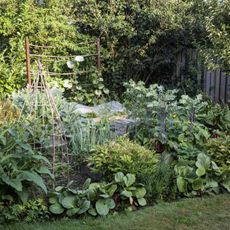 Foodscaping: The Most Beautiful Way To Grow Your Own Food
Foodscaping: The Most Beautiful Way To Grow Your Own FoodFoodscaping is a beautiful and profoundly practical way to mix beauty and function in your yard. Try food landscaping for a real sense of abundance.
By Bonnie L. Grant
-
 Hops Plant Pruning: When And How To Prune A Hops Plant
Hops Plant Pruning: When And How To Prune A Hops PlantIf you're a home brewer, there's nothing more satisfying than growing your own hops. But hops are long, fast growing vines that require some strategic pruning to get the most out of them. Learn more about how to prune a hops plant in this article.
By Liz Baessler
-
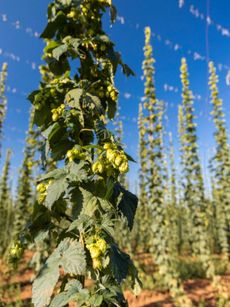 Hops Companion Plants: Learn What To Plant With Hops In Gardens
Hops Companion Plants: Learn What To Plant With Hops In GardensCompanion planting with hops can enhance crop growth and provide a decoy for pesky critters. That said, hop vines are aggressive growers so companion plants need to be considered carefully. This article can help with that.
By Bonnie L. Grant
-
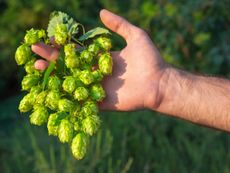 Harvesting Hops Plants: When Is Hops Harvest Season
Harvesting Hops Plants: When Is Hops Harvest SeasonAre you a home brewer? If you have some extra space in your garden, consider growing your own hops to make your beer even more personal.
By Liz Baessler
-
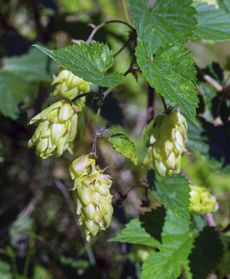 Hops Plant Fertilizer: How And When To Feed Hops Plants
Hops Plant Fertilizer: How And When To Feed Hops PlantsHops can grow up to a whopping 30 feet (9 m.) in a year! To attain this amazing size, it isn't any wonder that they like to be fed every so often. What are hops fertilizer requirements? The following article contains a sort of hops fertilizer guide to help.
By Amy Grant
-
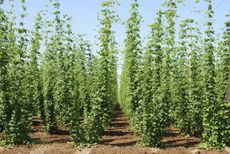 Hops Spacing Requirements – Tips On Plant Spacing For Hops
Hops Spacing Requirements – Tips On Plant Spacing For HopsMost people know that hops are used to make beer, but did you know that the hop plant is a fast-climbing vine? If you decide to grow hops, give a thought to hops plant spacing. This article has more information on spacing requirements for hops.
By Teo Spengler
-
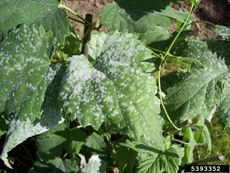 Hops Plant Diseases: Treating Diseases Affecting Hops Plants In Gardens
Hops Plant Diseases: Treating Diseases Affecting Hops Plants In GardensAs prolific as hops can be, the plant may still be afflicted with hops plant diseases. For a fruitful crop, it's important to learn about diseases affecting hops in order to treat hops plant problems ASAP. This article should help with that.
By Amy Grant
-
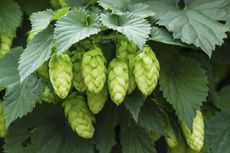 Reasons For No Cones On Hops: How To Get Cones On Hops Plants
Reasons For No Cones On Hops: How To Get Cones On Hops PlantsHops with no cones may be due to the time of the year, cultivation practices, or the age of the vines. Professional growers know how to get cones on hops plants and you can too with a little advice and some tips from the trade. This article will help.
By Bonnie L. Grant
-
 Propagating Hops Plants: Planting Hops From Clippings And Rhizomes
Propagating Hops Plants: Planting Hops From Clippings And RhizomesHops plant propagation is primarily from root cuttings. Planting hops from clippings will result in identical clones to the parent hop plant. Here are some surefire tips on how to propagate hops plant for beautiful vines and copious cones.
By Bonnie L. Grant